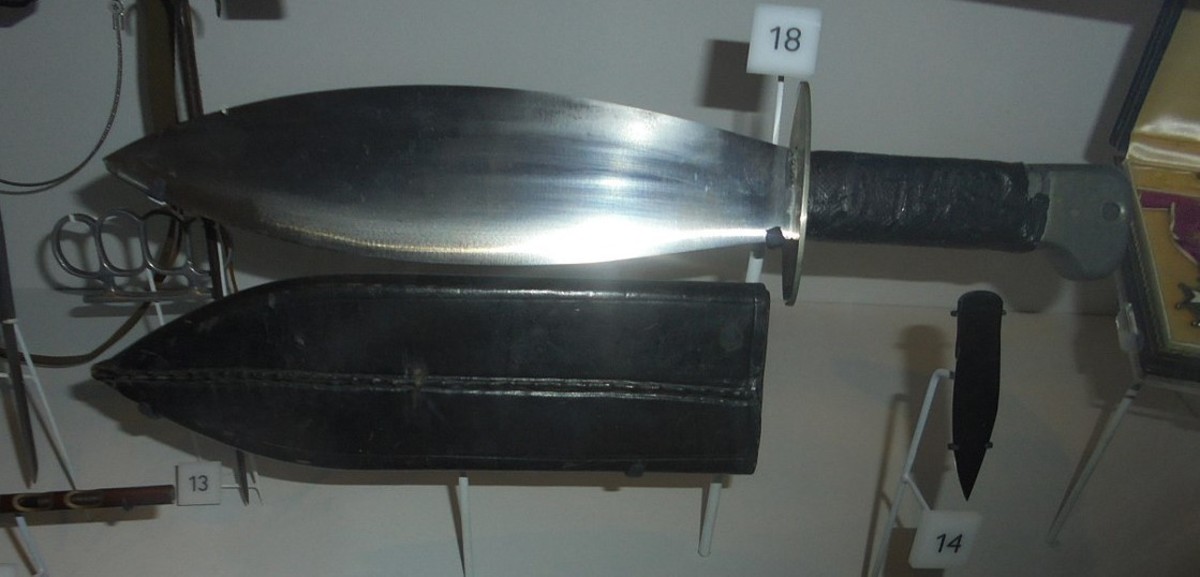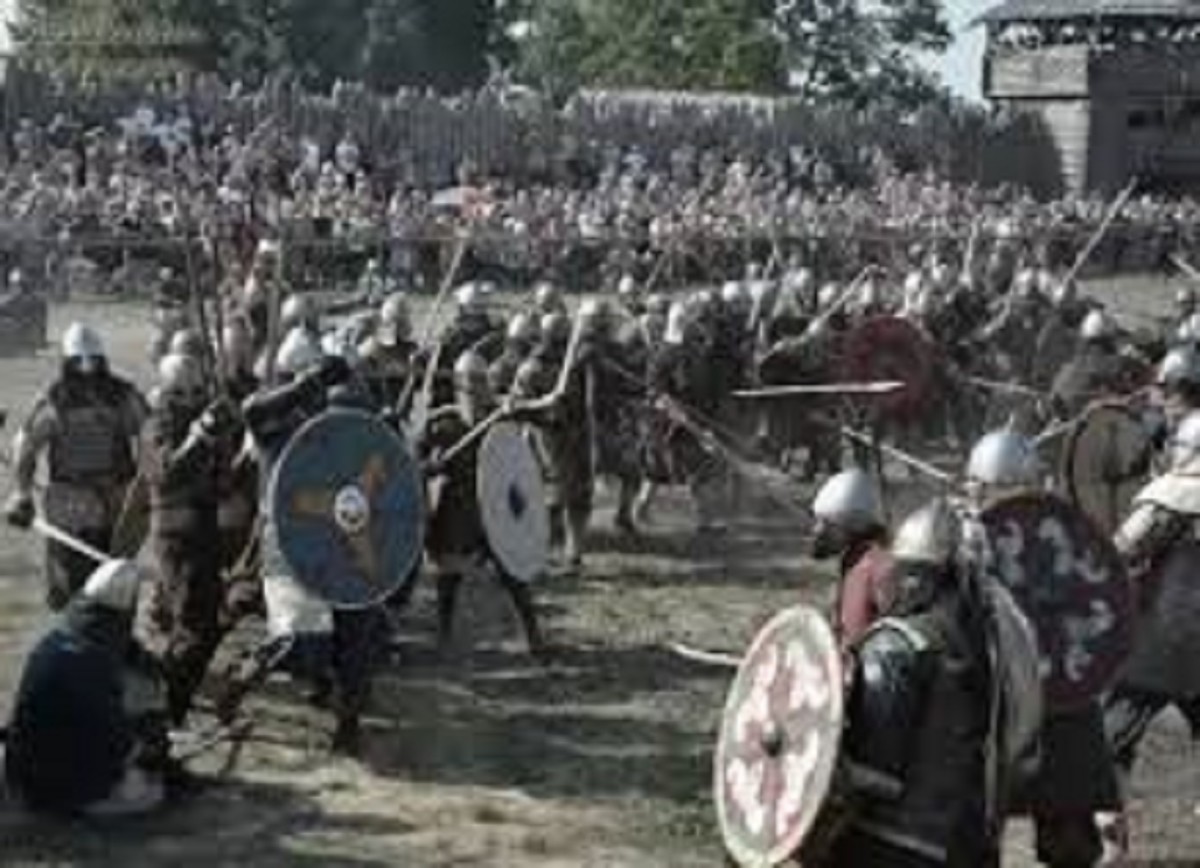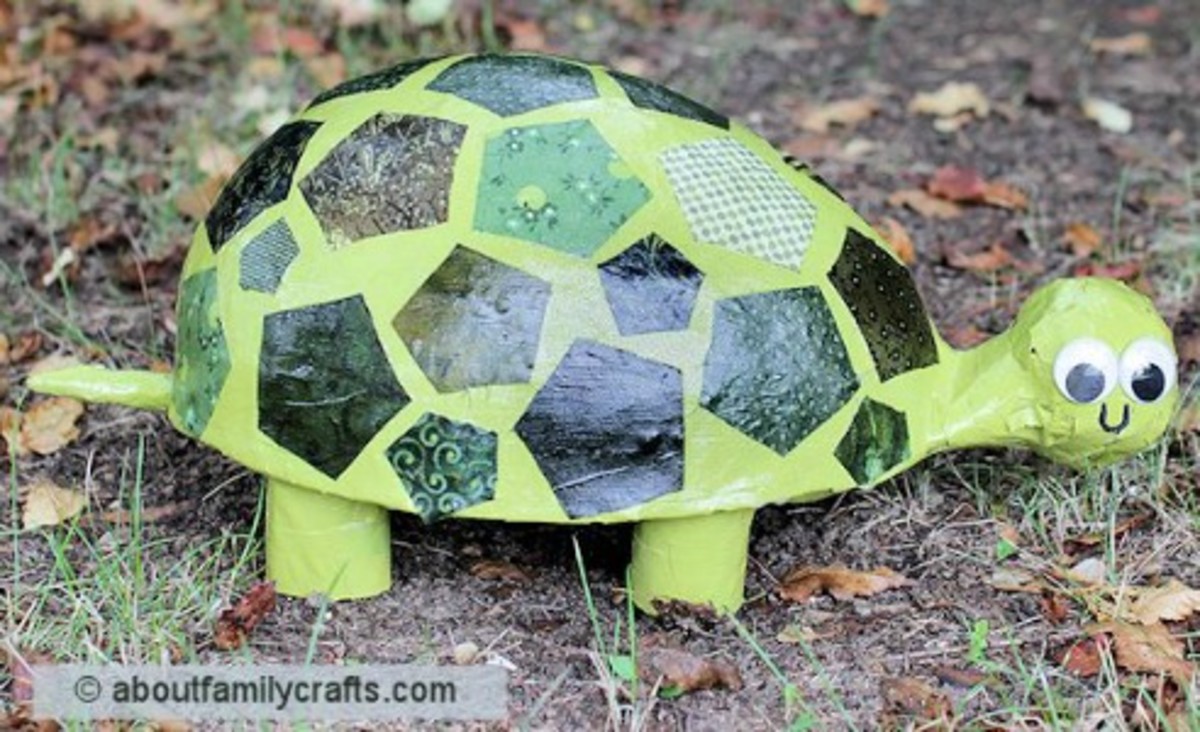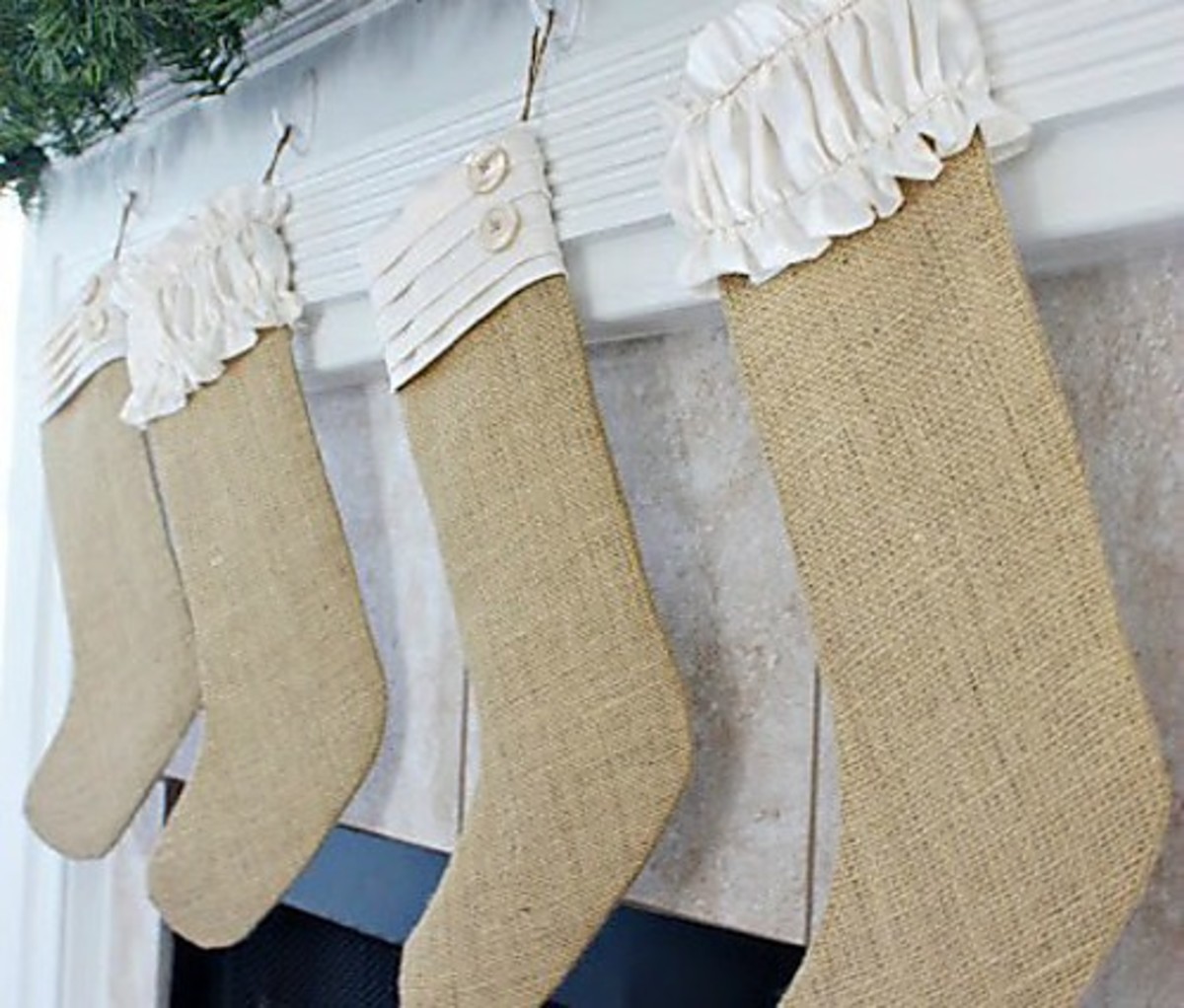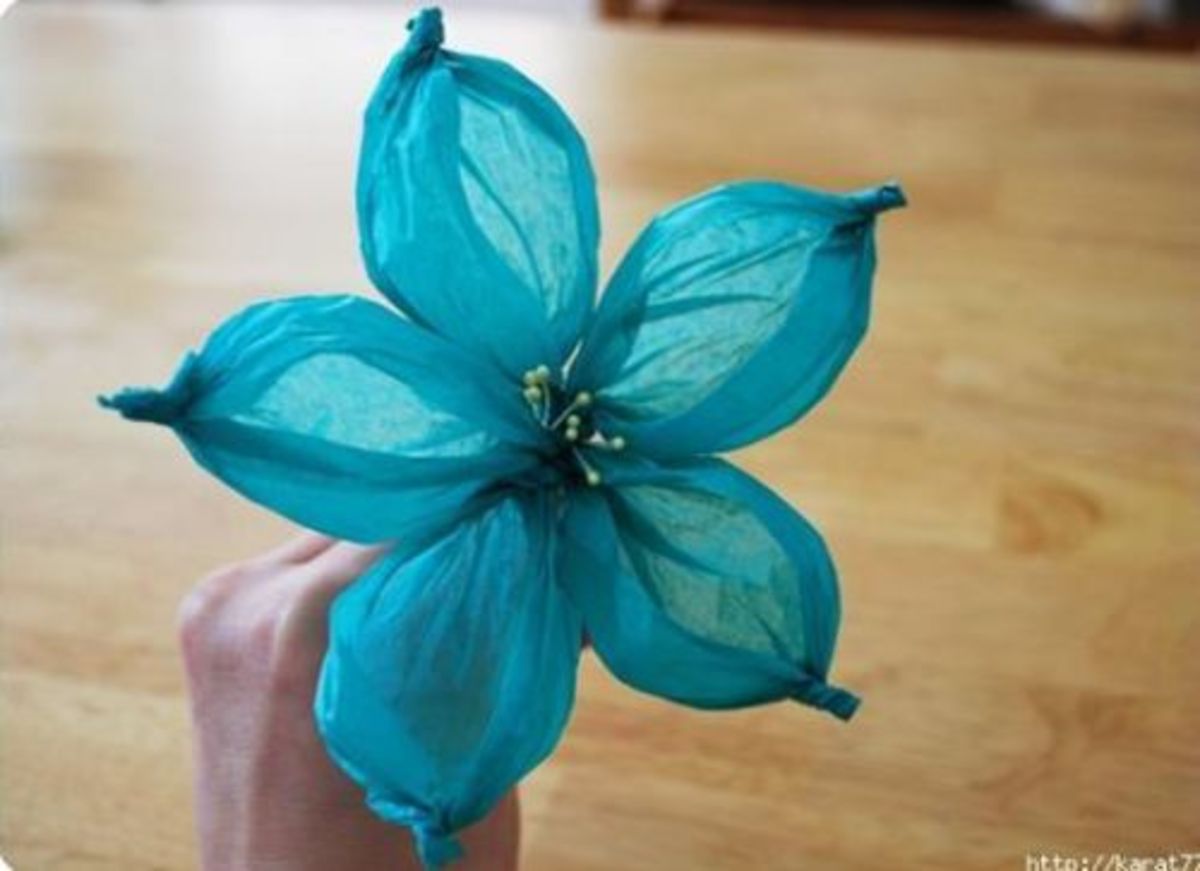Mandau
The History of Mandau
Mandau is a traditional saber of the Dayak tribe in Borneo. It looks like a machete, but it longer and large. The Dayaks is the indigenous people of Borneo. Borneo is part of the five major islands in Indonesia. In everyday life, this weapon cannot be separated from its owner. That is, wherever the owner goes, this kind of saber will always be brought by the owner because in addition as a weapon to protect themselves, Mandau also serves as a symbol of a person's honor and identity. For the record, a long time ago, Mandau was considered to have magical elements and are only used in certain rituals such as war, headhunting, fixtures traditional dance, and ritual instruments.
Mandau is a traditional weapon of the Dayak tribe that is hereditary relics and regarded as sacred goods or have supernatural powers. Besides the function of a means to protect themselves and for fight, Mandau is also a useful tool for cutting and slash the plants and other objects, as almost the majority of Dayak people's lives everyday were being in the woods, so they always carry a Mandau in a way by tied it around their waist. The Dayak also adventurous, so Mandau is a useful tool for them in exploring the interior of Borneo. Among the Bidayuh community and Penan people, Mandau is also known as Parang Ilang or Malat by the Kayan community or Baieng by the Kenyah community.
According to numerous resources, the word of Mandau was derived from the name of a man named "Man Da U" which was originated from the ancient tribe of China "Namman" or the Southern Barbarian. Man Da U came to Borneo island along with the South Barbarian Nations prisoners of war. There are men and women prisoner who later hired into a slave and serve Man Da U. Man Da U came to Borneo to seek a natural resource. He went to rivers and forming groups of people from one place to other places. Their bodies are marked with carving tattoos so that they can recognize each clan group they met.
Man Da U was known ruthless and expert in war. His clan groups fight against other nations who came to the island of Borneo including the Malays and Austronesian people. Man Da U also was the first person who makes the shape of a sword weapon that resembles the shape of the machete. Due to the frequent wars between clans and nations that came to the island of Borneo, Man Da U became famous with his sharp weapon blade and was like decapitating the enemies (custom Headhunting) with the result that the other nations finally was not dare enter their area. Decapitating enemies became customary symbols of the Dayak tribe where it called indigenous sabers headhunting. And until today, Mandau knew as the name of a traditional weapon of Dayak native from the island of Borneo.
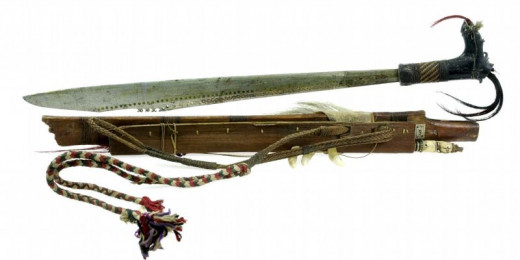
The Mandau Parts
- Mandau Blades
Mandau blades are made of wrought iron plates to form a flat length such as machetes and pointed (resembling a curved upper beak flat). One side of the blade is sharpened while the other side is left a little thick and blunt. There are several types of materials that can be used to make a Mandau, namely: montallat iron, matikei iron, and steel was taken from a car, chainsaw blades, discs vehicle, and so forth. Reputedly, most good quality Mandau is made of the mountain stone that melted specifically, so, the iron will become very strong and sharp, not to mention the decorations given a touch of gold, silver, or copper. Mandau of this type is only made by certain people.
It takes the ability to choose rocks that contain iron to make the Mandau. They cook the rocks that have been collected in piles of twigs and dried leaves by using a tool called puputan, until the rocks were glowing. In the kindled state, they put the rocks in the water, then the rocks will boil in the water and decomposes.The results of the unraveled rocks one of which produces granular iron then being processed into Mandau-making materials that are called mantikei iron. The mantikei iron is very hard, sharp, and elastic, it actually also contains poison. In addition, Mandau believed to be feared by spirits who have malicious intent because of the magical power possessed by the mantikei iron.
Making the Mandau blades begins with making the coals in a furnace so that the iron can expand. The wood used to make the embers is ironwood. Ironwood has been selected because it’s able to produce a higher heat than other types of wood. After the wood is inserted into the coals, then the mantikei iron that will be created as the blades placed on top of the coals in order to expand. Making Mandau with mantikei iron is easier because the heating process only once and no need to be repeated. After once heated, then it immersed in water once again, commonly called Suhup Lewa, mantikei iron can immediately process into the desired form of Mandau by forged using a hammer. The forging process needs to be repeated until they get the desired shape of Mandau blades. After the forging process is done, then the result can be smoothed by using a saber blade grinder. After the blade is formed, the next stage is decorated with grooves and serrations on the eyes of the Mandau and holes in the Mandau blades. Ancient Mandau has holes as a sign. The number of holes in a Mandau represents the number of victims who were killed with the mandau in ancient times. To make the Mandau decoration is similar way like how to make the Mandau blades, in which, by expands the materials and hit with hammers repeatedly to get the desired shape.
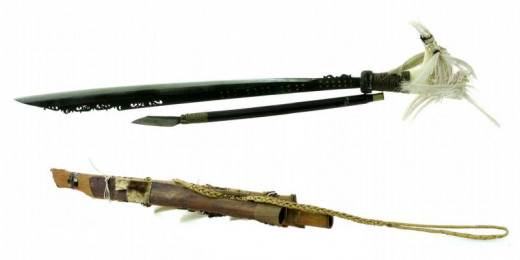
- Mandau Handle
Mandau handle is also called Pulang. Pulang or the handle of Mandau is carved using deer antlers if painted white or buffalo horn if painted black. But, it can also be made using kayamihing wood. The Pulang is carved to resemble a bird's head. The entire surface of the handle carved with various motifs such as: the head of a dragon, a beak, gyre and a hook. At the end of the handle, there is also adorned with animal hair or human hair. Shape and carved on the handle can distinguish the origin of the Mandau where it made, ethnicity, and social status of the owner.
To process the Pulang Mandau-making with kayamihing wood, first the wood that will be used is immersed in a landslide, land that is found in coastal areas. To glue the Mandau with the Pulang by using wood sap landline which has proven to have adhesive power. Once Pulang and Mandau tied really good, then it tied once again with jangang. Endurance and capabilities of jangang can't be doubted, but if jangang is hard to find, it can be replaced with woven rattan.
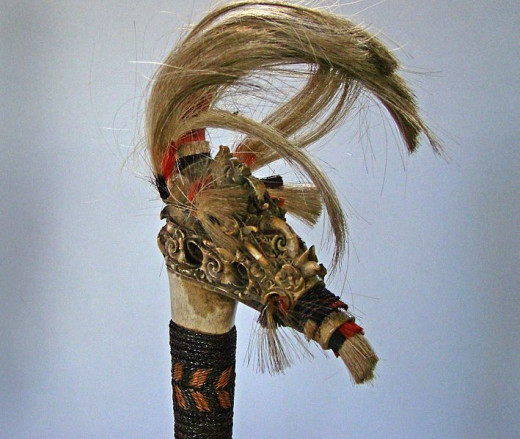
- Mandau scabbard
Kumpang is scabbard of Mandau blades. The Kumpang is made of wood covered with deer antlers at the end of the section of Kumpang, the entry of the Mandau blade and usually decorated with carvings. The Kumpang can be made from onion wood tree trunks or garunggung wood that has an old age. At the Kumpang is given three tempuser undangs, namely the triple bond made from the plant of uei (rattan). If the undang has four pieces of Tempuser, that means the Mandau was belonged to Pangkalima. Pangkalima means the person who is able to process the iron mountain stone into Mandau. In addition to the Kumpang bound, also tighten a bag made of bark and containing ivory knife and wood chippers that believed to be able to reject the beast. Mandau that attached in Kumpang usually tied at the waist with braided rattan.
The Mandau scabbard (Kumpang) usually made of thin wood plates. The top is coated with the annular bone while the middle and bottom of the scabbard are covered with a woven rattan to strengthen the clamp. As an ornament, usually baliang feathers are placed, tanyaku feathers, beads and sometimes a talisman also pinned on the mandau. In addition, the Mandau is also equipped with a small knife with sheath leather tied and attached to the side of the scabbard and given a rope made of woven rattan that is tied around the waist. How to wear a Mandau rightfully is tied it at the left waist. The Kupang Mandau is placed facing forward and the Mandau tip is facing up. Ropes used to tie the Kumpang besides the Mandau at the waist and it is also bound and store penyang which is animal fangs and small objects as a magical talisman.
In general, to make Kumpang, usually the type of wood that used is garunggung wood. That is because apart it is easily formed, it is also not easily broken. The popular carvings for Kumpang are called Rambunan Tambun. Equipment that is used to make the Kumpang is a sharpener, knife, jujuk, and sandpaper leaves. In order, so that the Kumpang can become smooth and slippery, Kumpang then sanded with similar hairy leaf named bajakah tampelas.
On the front of the Kumpang, there is a small scabbard to keep Langgei Puai. Langgei Puai is types of a small knife to complementary the Mandau. The stalk, length of about twenty centimeters and the blade is smaller than the stalk. The shape of the blade where it gets to the end more pointed and very sharp. It uses to cleanse and soften objects such as rattan, it also serves to remove the thorn that trampled on the foot, because in the past Dayaks wandering in the woods barefoot. The scabbard or Kumpang Langgei attached to the sheath or Kumpang Mandau, so the Mandau and Langgei Puai always side-by-side, inseparable.
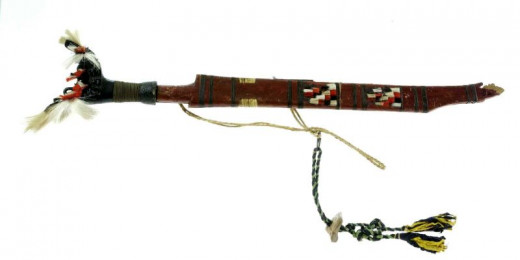
The difference between Mandau, Parang, Ambang or Apang
People often confuse between Mandau and a machete or the so-called Ambang or Apang. A person who is not accustomed can easily assume either the Ambang or Apang are actually Mandau because it looks similar. However, when examined more carefully, the differences will be found. Mandau is more powerful and flexible because it is made of stone containing mountain iron with certain processing while the Ambang or Apang made of ordinary steel.
Ambang is the designation for the Mandau where the blade made of ordinary steel. Ambang is often used as a souvenir or just for everyday purposes such as cutting grass or trees. Common people or people who are not accustomed to seeing or holding a Mandau would be difficult to distinguish between a Mandau with Ambang as if take a look at naked eyes it just seems similar. But, in fact, Ambang and Mandau are really different. If we pay attention to it carefully, the difference will look very noticeable. The Mandau ornaments are inlaid with gold, copper or silver while other is not. Mandau is more powerful and flexible, because the blades are made of basalt containing iron and processed by an expert. While Ambang is only made of ordinary steel.
According to the literature of Balanga Museum - Palangkarya, the raw material of Mandau is mantikei iron (sanaman) contained in the headwaters of the Matikei - Tumbles Atei Village. This iron is flexible so it easily bent. The Mandau original prices start from 1 million Rupiahs. The old Mandau and original one, have a strong iron and could reach $ 1600 per Mandau. Raw material for making regular Mandau can also use iron from spring cars, chainsaw blades, vehicles discs and other iron scraps. A working tool that is used to make Mandau primarily is a hammer, betel, and a pair of pointed iron to pierce the Mandau for making the ornament holes and carving. In addition, electric-powered air blower is used to inflame wasted ironwood flame use to heat the iron. Ironwood is chosen because it can generate more heat than other woods.
Mandau for souvenirs usually has wooden-handled and the prices are ranging from $10 to $40 depending on the quality of the iron that used. The original Mandau has penyang. Penyang is clusters of Dayak knowledge gained from the results of an ascetic or ancestor's guide used for fighting. Penyang will make the person who holds the Mandau becomes powerful, robust and resistant if face the enemy. Mandau and penyang are a unity that cannot be separated from generation to generation of ancestors.

